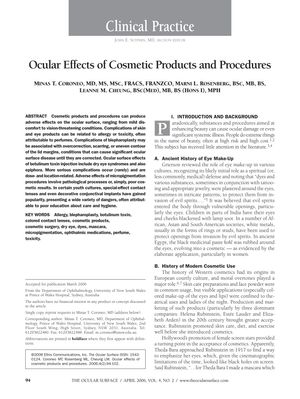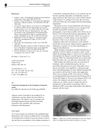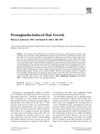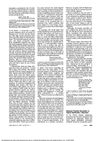Ocular Effects of Cosmetic Products and Procedures
April 2006
in “
Ocular Surface
”

TLDR Cosmetics and procedures can cause eye issues, from mild discomfort to serious conditions, due to allergies, toxins, or poor care.
The article discusses the potential adverse effects of cosmetic products and procedures on the ocular surface, ranging from mild discomfort to vision-threatening conditions. Complications of skin and eye products can be related to allergy or toxicity, often attributable to perfumes. Complications of blepharoplasty may be associated with overcorrection, scarring, or uneven contour of the lid margins, conditions that can cause significant ocular surface disease until they are corrected. Ocular surface effects of botulinum toxin injection include dry eye syndromes and also epiphora. More serious complications occur (rarely) and are dose- and location-related. Adverse effects of micropigmentation procedures involve pathological processes or, simply, poor cosmetic results. In certain youth cultures, special-effect contact lenses and even decorative conjunctival implants have gained popularity, presenting a wide variety of dangers, often attributable to poor education about care and hygiene.




